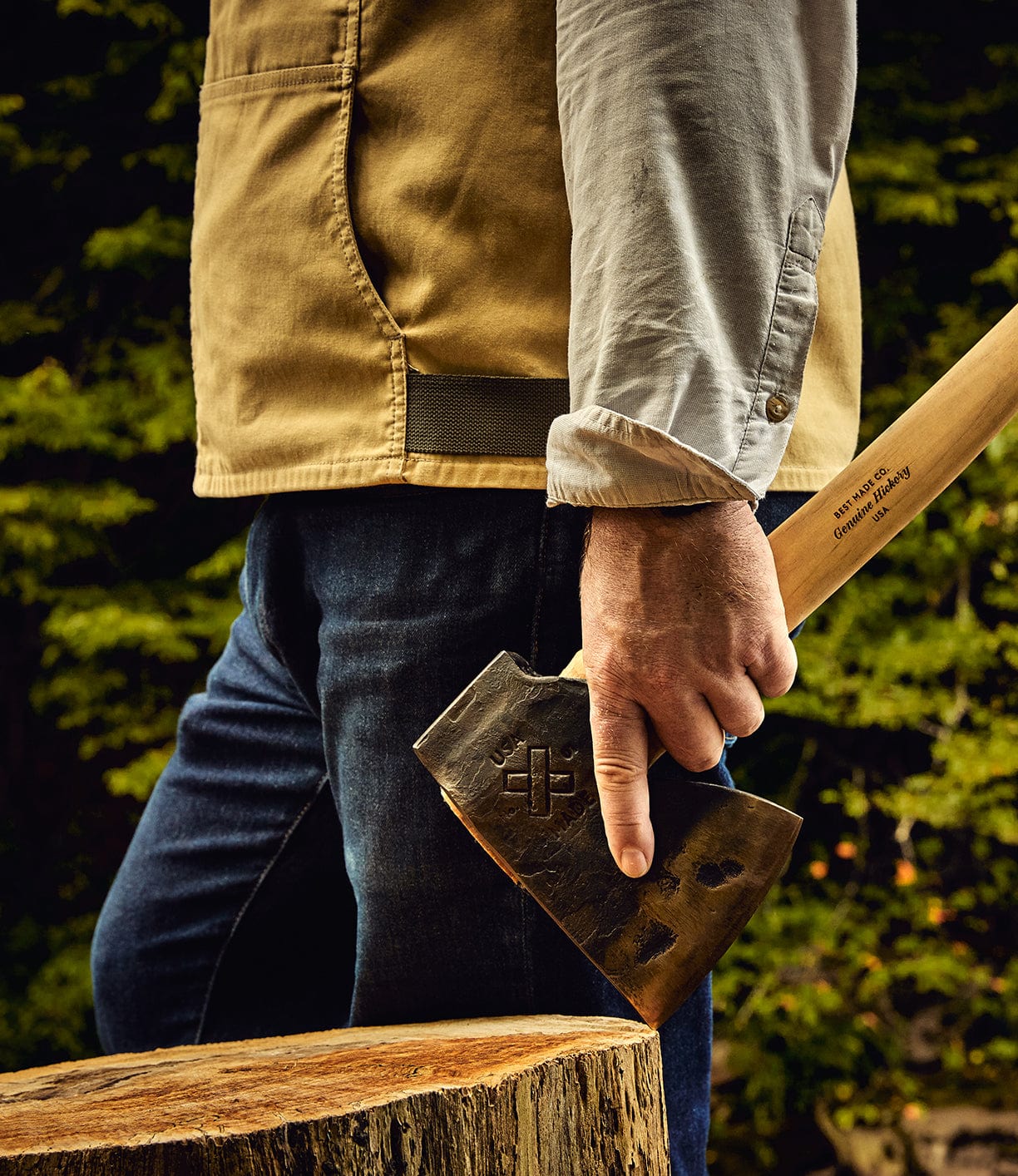
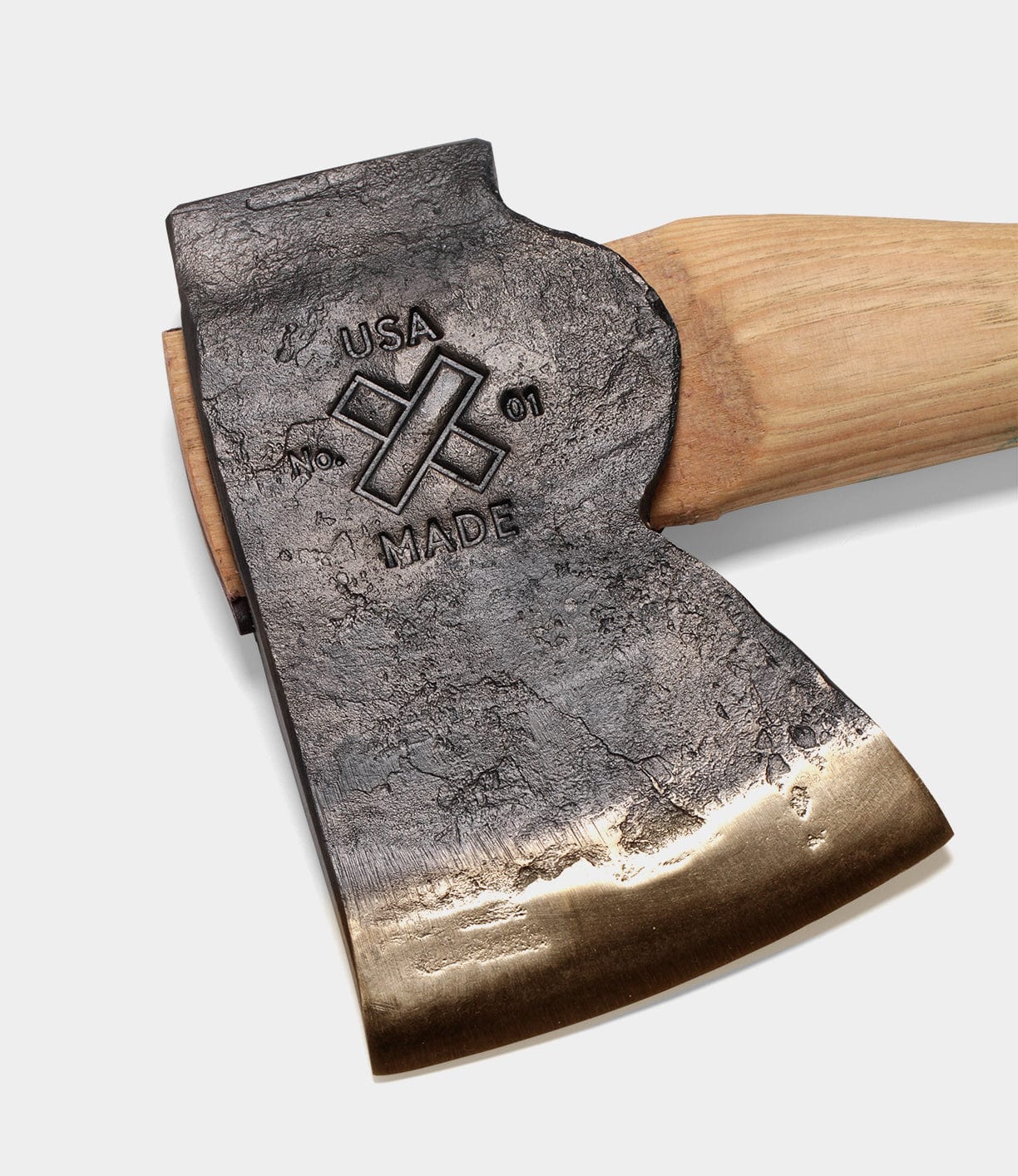
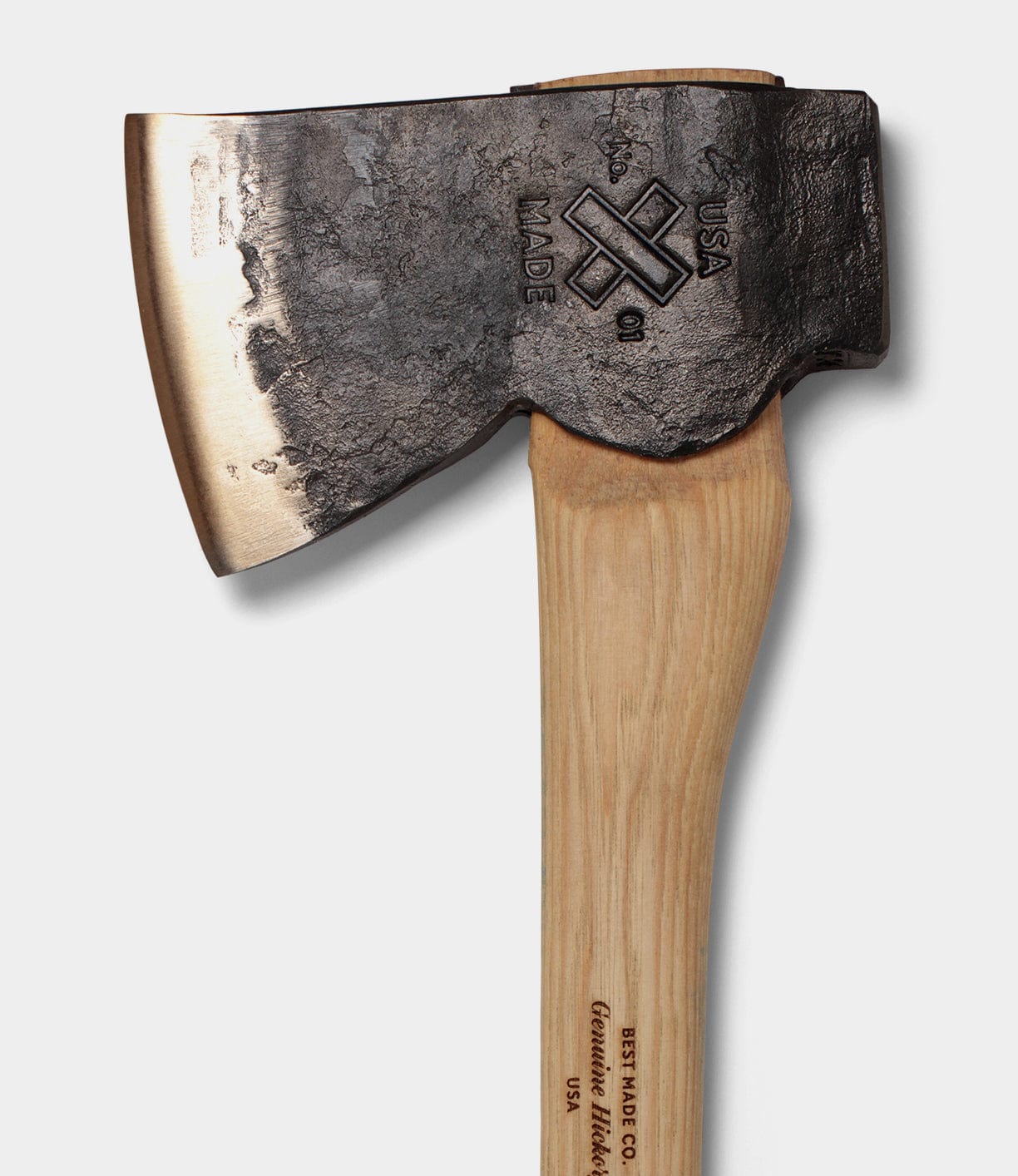
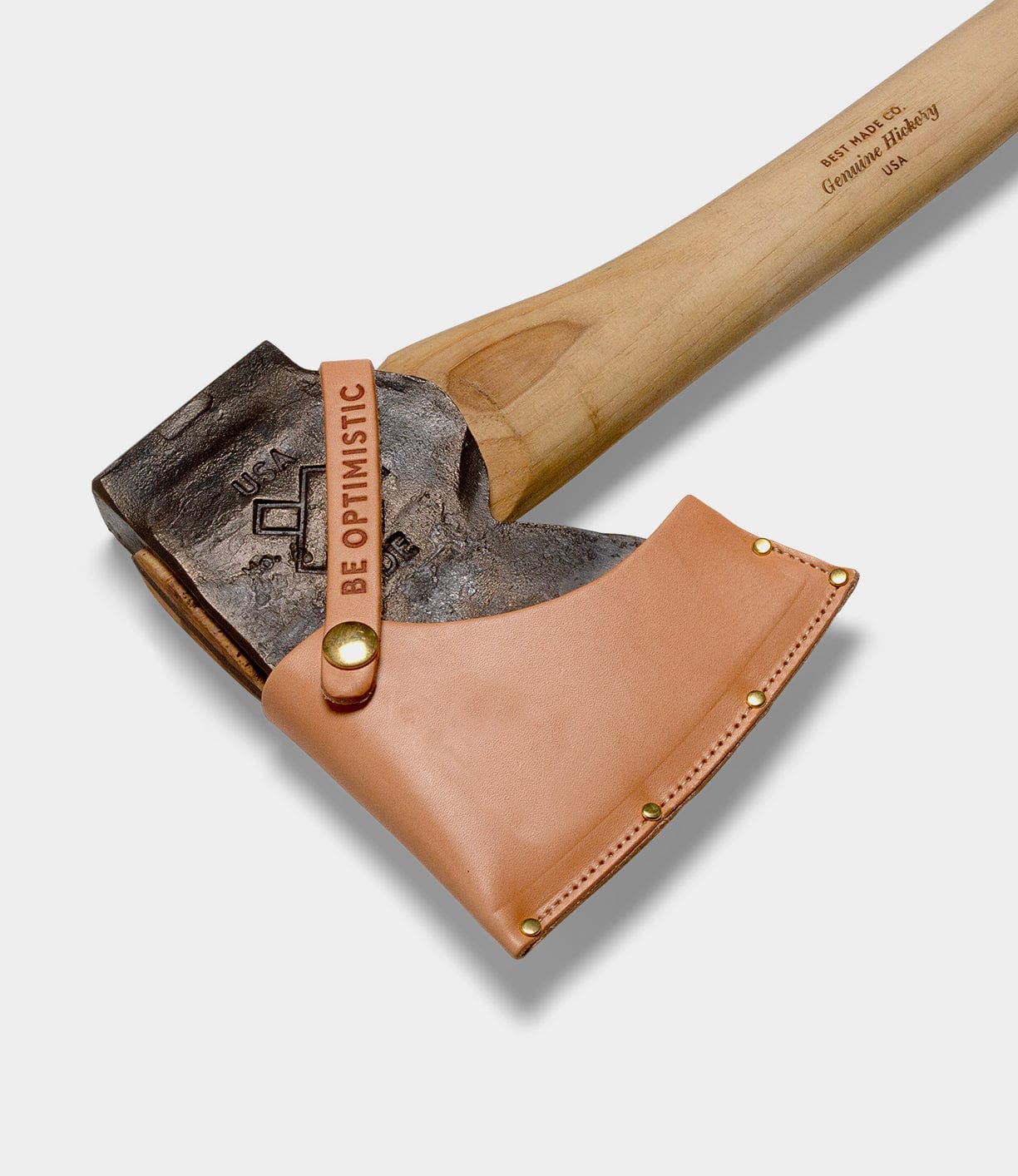
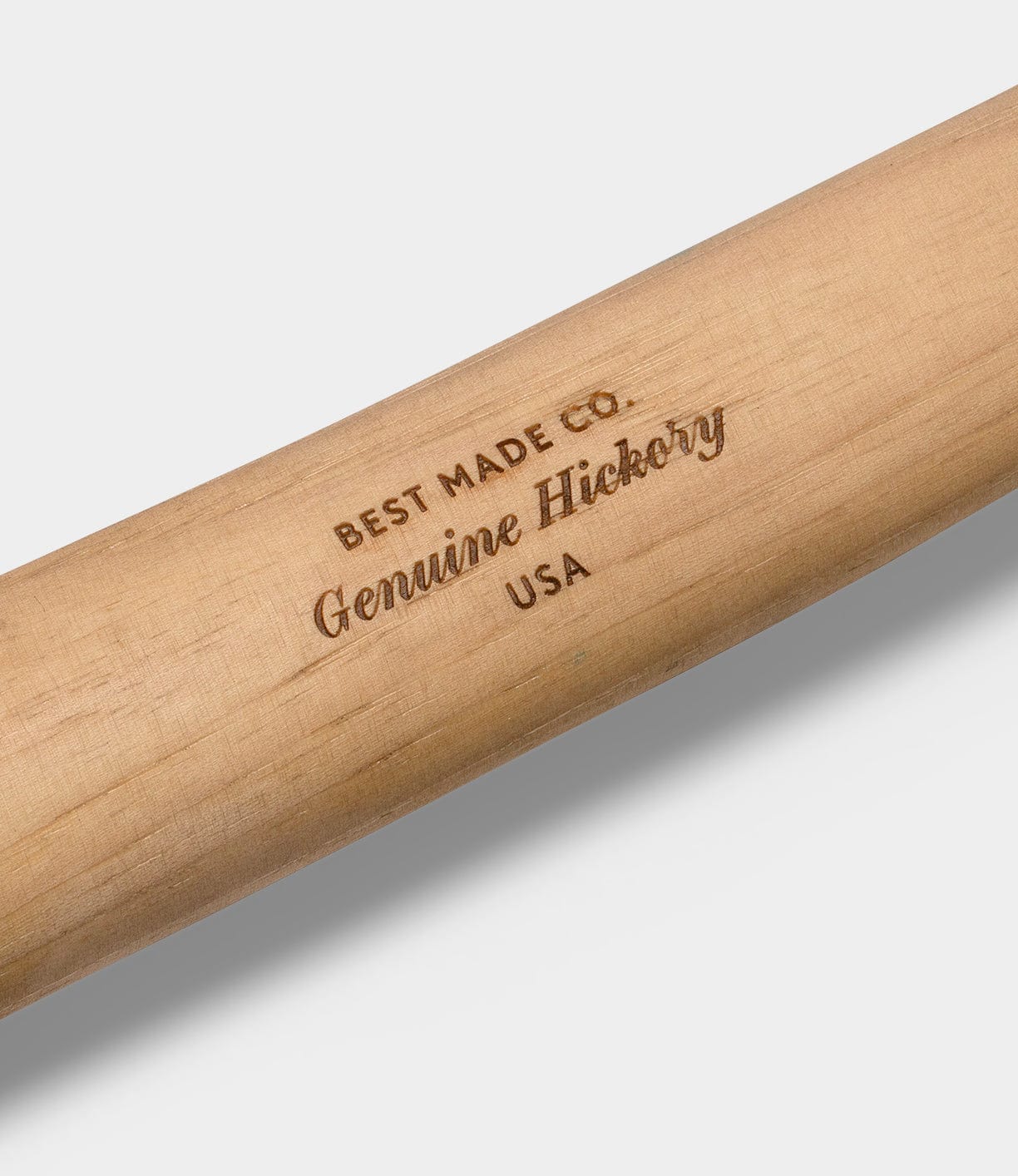
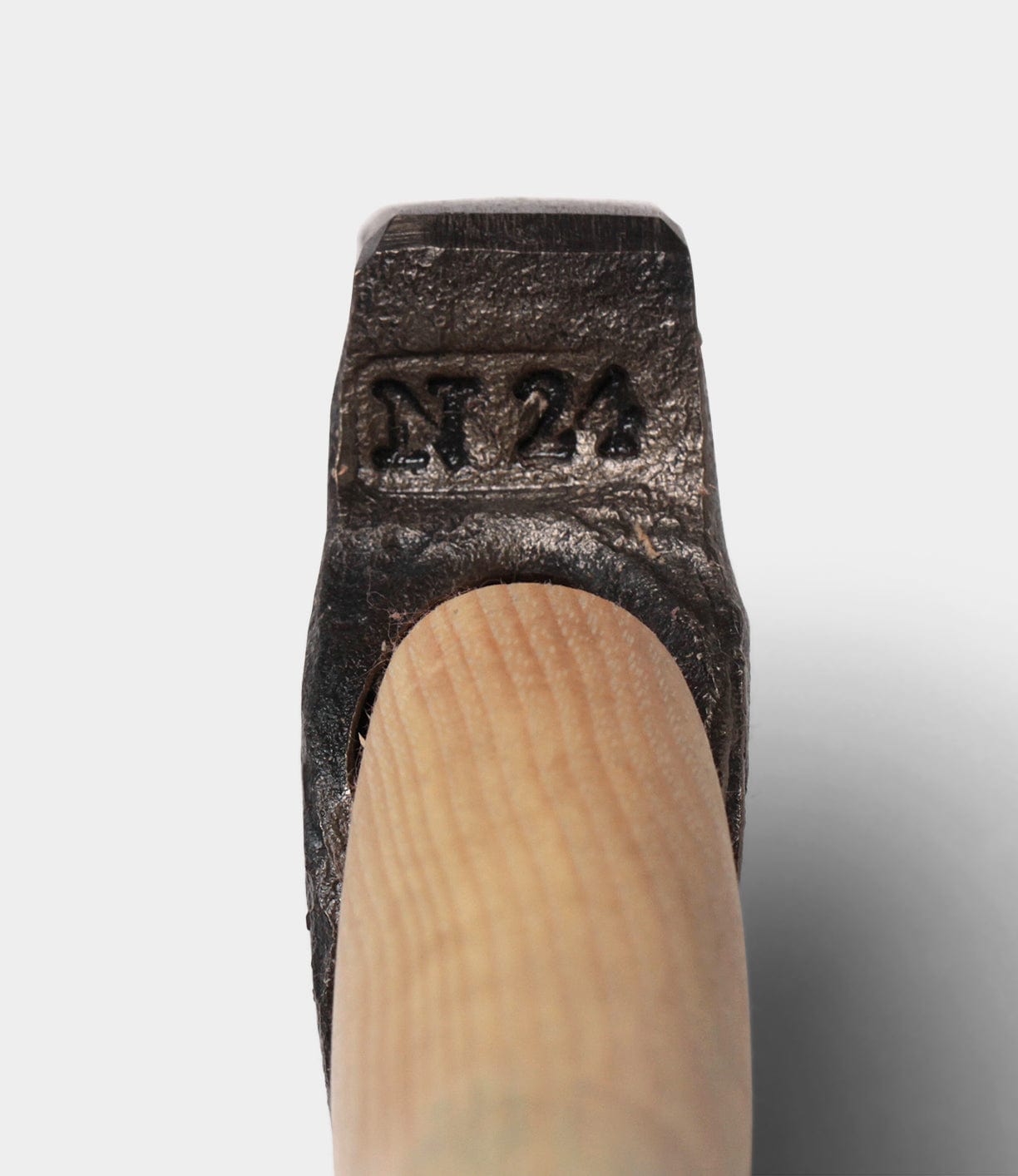
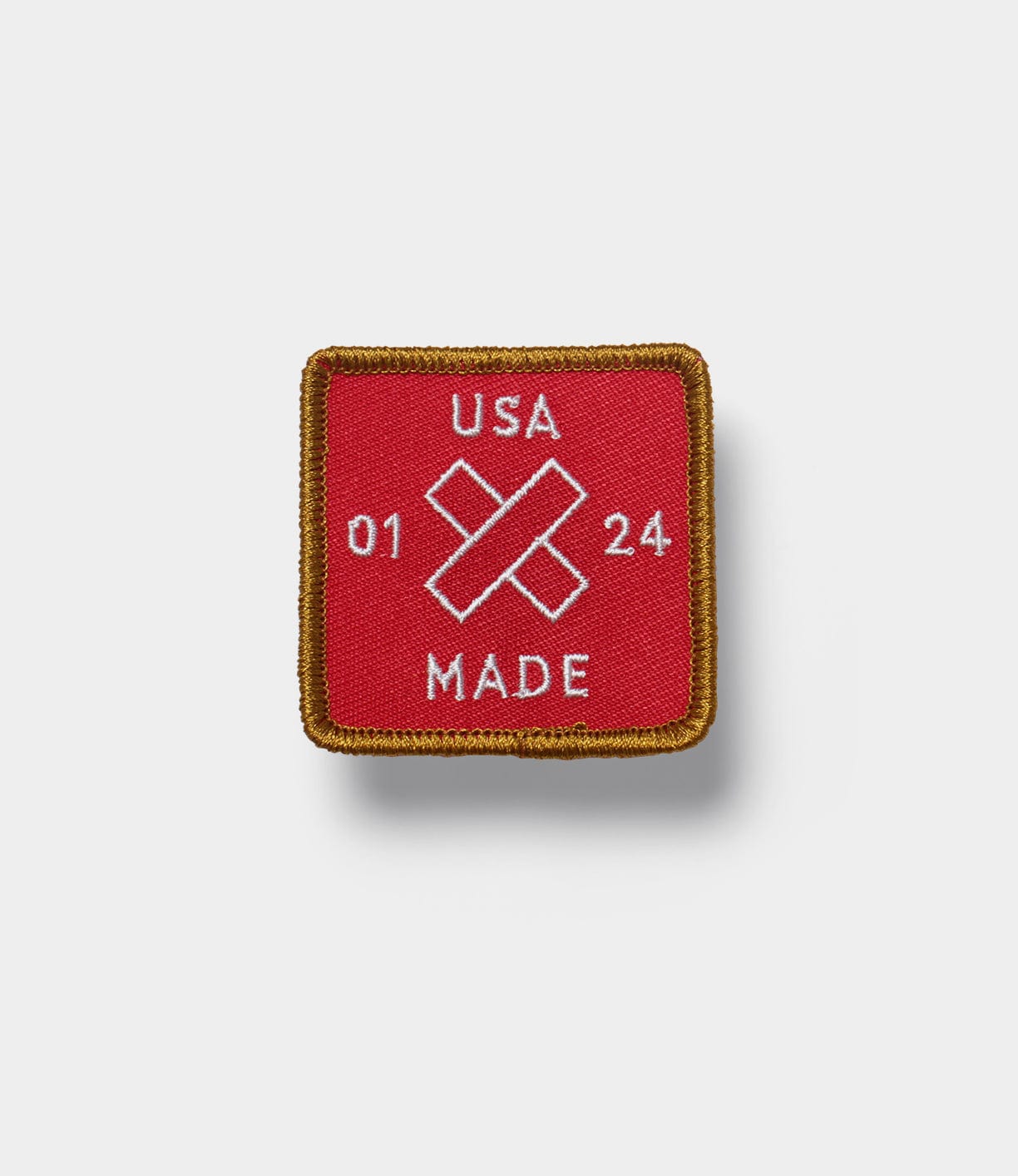
Relaunching Best Made raised many questions, chiefly: where to begin? The axe wasn't a guaranteed starting point until I met Nathan Brandt.
After announcing the reacquisition, I received an email from Anderson, Indiana. The sender wanted to make the next Best Made axe. One phone call later and I was driving west to meet him. Nathan Brandt's main business, Coal Iron, produces forging equipment for axes, knives, and tools. A skilled blacksmith by trade, Nathan wanted to return to the forge and make axes solely for Best Made. We spent an afternoon discussing the possibilities. And I left knowing I had a partner and exactly where the next Best Made would start.
Old Gold No. 1 draws from a mid-nineteenth century design by William McKinnon of Rockaway, New Jersey. Known as the ""Rockaway"" pattern, it features a pronounced lug, sweeping heel, and a long elegant bit. McKinnon died tragically in his shop in 1905. You’ll find his pattern on the pages of most any axe history book, but despite its iconic status, the pattern nearly vanished from production.
For months Nathan and I worked closely on the research, design, materials, and features that would define this axe. Nathan guides every step of the manufacturing of our axes. Each axe is forged by hand, the 1060 high-carbon steel is tempered to a Rockwell Hardness of 55-58 HRC, and the tempering process allows for subtle color variations that create this limited edition golden hue. The visible forging marks give each axe its “forge-finished” character. And for the first time, Best Made axes bear our trademark X and the blacksmith's initials, deep-stamped in their heads. Each axe is ground and sharpened by hand, and securely stowed in a branded corrugated box with our signature Wickett & Craig bridle leather blade guard.
After announcing the reacquisition, I received an email from Anderson, Indiana. The sender wanted to make the next Best Made axe. One phone call later and I was driving west to meet him. Nathan Brandt's main business, Coal Iron, produces forging equipment for axes, knives, and tools. A skilled blacksmith by trade, Nathan wanted to return to the forge and make axes solely for Best Made. We spent an afternoon discussing the possibilities. And I left knowing I had a partner and exactly where the next Best Made would start.
Old Gold No. 1 draws from a mid-nineteenth century design by William McKinnon of Rockaway, New Jersey. Known as the ""Rockaway"" pattern, it features a pronounced lug, sweeping heel, and a long elegant bit. McKinnon died tragically in his shop in 1905. You’ll find his pattern on the pages of most any axe history book, but despite its iconic status, the pattern nearly vanished from production.
For months Nathan and I worked closely on the research, design, materials, and features that would define this axe. Nathan guides every step of the manufacturing of our axes. Each axe is forged by hand, the 1060 high-carbon steel is tempered to a Rockwell Hardness of 55-58 HRC, and the tempering process allows for subtle color variations that create this limited edition golden hue. The visible forging marks give each axe its “forge-finished” character. And for the first time, Best Made axes bear our trademark X and the blacksmith's initials, deep-stamped in their heads. Each axe is ground and sharpened by hand, and securely stowed in a branded corrugated box with our signature Wickett & Craig bridle leather blade guard.
1060 high-carbon steel, Appalachian hickory
For the first time, we're proud to offer axes in different lengths. Choose the axe that fits you. Bigger is not better. Experienced choppers often use small axes with thin handles. To size the axe that’s right for you, measure from your armpit to the middle of the palm of your outstretched hand. That distance is the approximate length of the axe you should swing. This is not a science, and there's always room for personal preference.
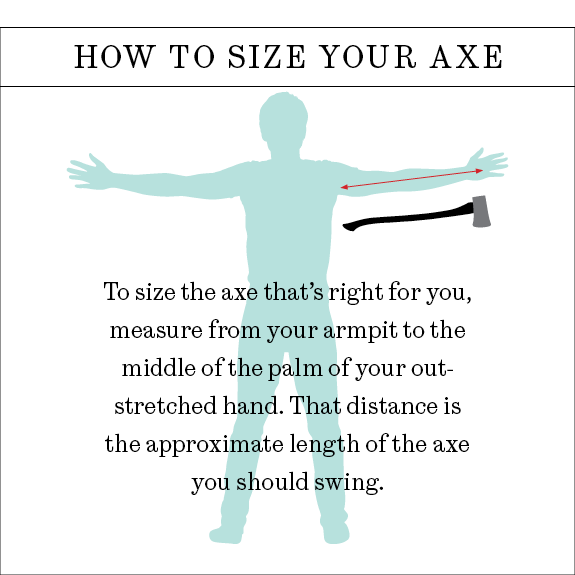

Cleaning: Clean the axe head after use. Remove sap and dirt with steel wool or acetone-soaked cloth. Avoid water; it promotes rust. Wipe the handle clean and dry.
Oiling: Oil the axe head with a thin coat of boiled linseed oil to prevent rust. Wipe off excess. Oil the handle periodically to prevent drying and cracking. Do not dispose oil rags in garbage, let dry outside first.
Sharpening: Keep the axe as sharp as possible. Sharpen as needed with a stone or file, maintaining the correct bit profile.
Storage: Store the axe in a dry place with the blade guard on for safety.
Regular maintenance: Inspect regularly for wear or damage, especially where the head connects to the handle. Address any issues promptly.
Consult Buchanan-Smith’s Axe Handbook for more detailed guidelines and tips.
Oiling: Oil the axe head with a thin coat of boiled linseed oil to prevent rust. Wipe off excess. Oil the handle periodically to prevent drying and cracking. Do not dispose oil rags in garbage, let dry outside first.
Sharpening: Keep the axe as sharp as possible. Sharpen as needed with a stone or file, maintaining the correct bit profile.
Storage: Store the axe in a dry place with the blade guard on for safety.
Regular maintenance: Inspect regularly for wear or damage, especially where the head connects to the handle. Address any issues promptly.
Consult Buchanan-Smith’s Axe Handbook for more detailed guidelines and tips.
Made in the USA






